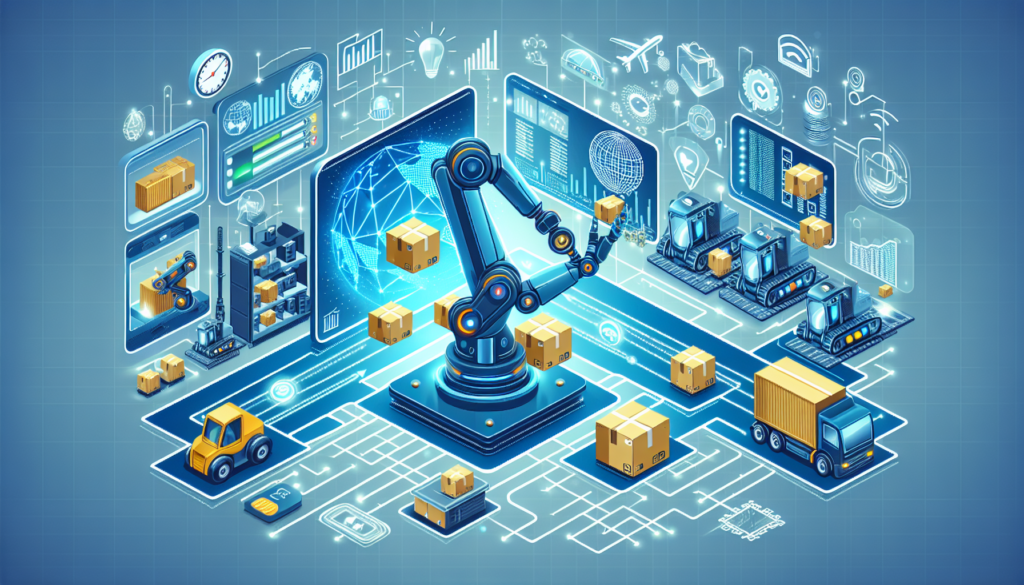In an era where efficiency and precision are at the core of industrial operations, robotics has emerged as a revolutionary catalyst in redefining supply chains. The role of robotics in this global readjustment is not only confined to the automation of repetitive tasks but also expands towards the integration of intelligent systems capable of making autonomous decisions and optimizing logistical processes. This article will delve into the technical complexities and recent developments in robotics applied to the supply chain, propelling a comprehensive vision that challenges the status quo and outlines the immediate future of the sector.
Robotic Integration in Modern Logistics
The adoption of robots in the supply chain has increased exponentially due to their ability to work uninterruptedly and execute tasks with superhuman precision. Autonomous Mobile Robots (AMRs), for example, have transformed the way inventory is managed in warehouses. Unlike Automated Guided Vehicles (AGVs), AMRs navigate using advanced algorithms and spatial recognition, allowing them to instantly adapt to changes in the environment.
Automated Storage and Retrieval Systems
Automated Storage and Retrieval Systems (AS/RS) represent another qualitative leap by enabling high-density storage and precise retrieval of products. These systems, through the use of highly organized shelving and picking robots, speed up processing times and reduce human errors, ensuring consistency and quality in inventory management.
Robotic Arms and Cobots
On the production line, robotic arms play critical roles in assembly, welding, and painting, with accuracy and speed that are unmatched. Cobots, or collaborative robots, have been integrated to work side by side with humans, enhancing job safety, and allowing agile adaptation in assembly lines.
Technological Advances in Applied Robotics
Computer Vision and Deep Learning: To maximize their effectiveness, robots are being equipped with computer vision systems, which, through deep learning, can autonomously identify, classify, and manipulate objects even under varying conditions of light and orientation.
AI-Guided Autonomous Robots: The incorporation of artificial intelligence (AI) has enabled robots not only to perform programmed tasks but also to learn and adapt to new situations, improving their performance through experience.
IoT Interconnectivity and Data Analytics: The integration of robotics with the Internet of Things (IoT) and data analytics provides real-time monitoring of the state of operations, allowing data-driven decision-making.
Case Study: Amazon Robotics
Amazon is an undisputed benchmark in the intelligent implementation of robotics in its fulfillment centers. Its army of more than 200,000 mobile robots, from the well-known “Kiva robots” to the most advanced sorting systems, have drastically reduced delivery times and created a model of efficiency replicated globally.
Current and Future Challenges in Robotics
Despite the impressive efficiency that robotic systems bring to the supply chain, there are inherent challenges that arise with the adoption of these technologies. Interoperability between robots and legacy systems, cybersecurity, and the need for a highly trained workforce in the management and maintenance of these technologies are areas that require ongoing attention.
Sustainability and Robotics
Additionally, sustainability is emerging as a critical factor. The design of energy-efficient robots and the reduction of the carbon footprint through logistical optimization are becoming primary objectives within the sustainable development agenda of companies.
Long-Term Perspectives
The next generation of robots is anticipated to contribute significantly to the concept of the “autonomous supply chain,” where decisions are made in real-time and operations are executed without human intervention. The synergy between advanced robotics, machine learning, and nanotechnology predicts an era of even more disruptive transformations.
In summary, robotics is positioning itself as the central pillar of innovation in the supply chain, leading companies to rethink their operational models and invest in high-tech solutions. Proactivity in adopting these systems not only provides tangible competitive advantages but also sets the stage for the next wave of industrial revolution based on artificial intelligence and collaborative robotics.

